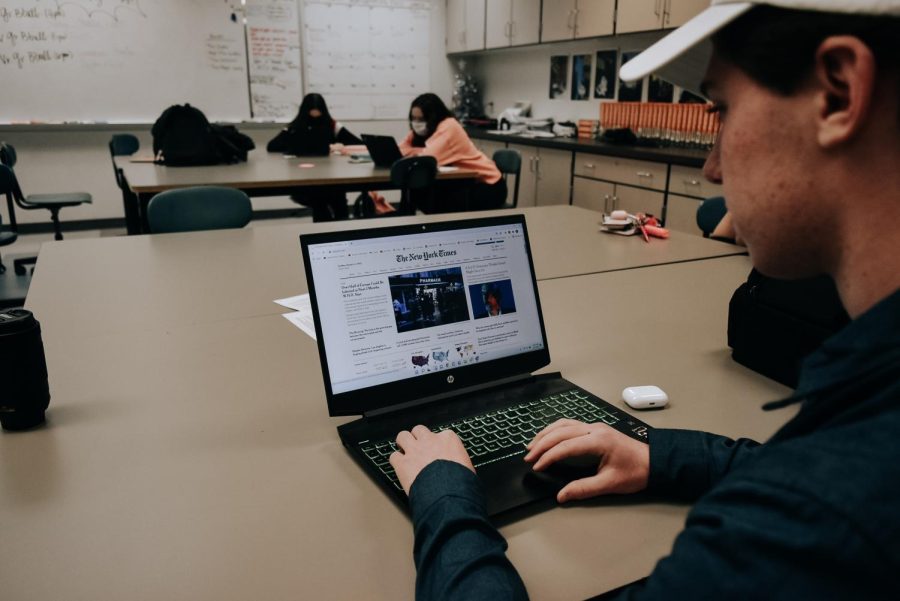Defining the Future of News in America
News and media consumption has changed drastically with the introduction of new technologies and social media. Gen Z is a generation that will never know a world without technology which defines much of how news is consumed among our age demographic.
According to a poll conducted through Thunder News Instagram, the majority of students obtain their news from various social media platforms. News platforms have adapted to the rapidly changing social media market to keep news relevant for the incoming generation. Most major news corporations have managed to maintain a social media presence that engages audiences of all ages. When asked what type of news students consumed through social media, the top answers were news accounts or a combination of reposts from peers, influencer commentary, and news accounts.

While becoming informed about the world around you is important, the more pressing issue is the lens through which you are looking. Reposts from peers and influencer commentary hang heavily on biases. Practicing media literacy will be an important skill for Gen Z to learn as fake news spreads faster than ever. Learning how to discern information as valid or invalid is crucial when developing personal opinions about current events. Students will continue to get their news in an array of different places, but with this plethora of options, comes a greater responsibility to hold news platforms accountable for misinformation as young journalists rise up to set the precedent for the future of journalism.
Students may be wondering how they can better their media literacy when consuming news media. There are a few things that when put into practice, will determine the effectiveness of news in students’ daily lives. The main way to practice media literacy is to ensure the news source is valid. Major news organizations are held to high standards which registers them as the most reliable. Reading news from The New York Times, Washington Post, Wall Street Journal, or BBC News can be the safest platforms to include in social media feeds. ABC, NBC, and CBS are reliable platforms to watch the news. Using multiple sources is also a good way to boost credibility. If multiple sources are saying the same thing, the information is more likely to be correct.
Another way to ensure information is factual is to recognize what fake news is and isn’t. Fake news will almost always feature a shocking headline or phrase with the intent to drive an emotional reaction from the consumer pulling them in for more. “Out of Astroworld Comes Travis Scott’s Illegitimate Son” or “Joe Biden Isn’t Able to Run a Country with Dementia” are a few examples. Bias is typically at the forefront. Self-proclaimed experts who fail to meet credentials that are associated with the topic are a definite red flag for bias. Tabloids are a great example. Tabloids are more for entertainment than information. That’s why People Magazine and Globe may not be the best news sources but can be entertaining to read. Another thing to keep in mind is the distinction between opinion and general news. Opinion news is intended to be opinionated and potentially biased, while general news should be strictly factual.
The power news corporations hold is large and influential. One small miscommunication can mean the difference between social mayhem or necessary social action. As the upcoming generation, it is important to take responsibility for what news builds the foundation of opinions and subsequent actions. Doing so will define the future of what news looks like for the average reader, watcher, or listener. Gen Z has been tasked with the important responsibility of ensuring news continues to arm the people with facts and give the people a voice.

